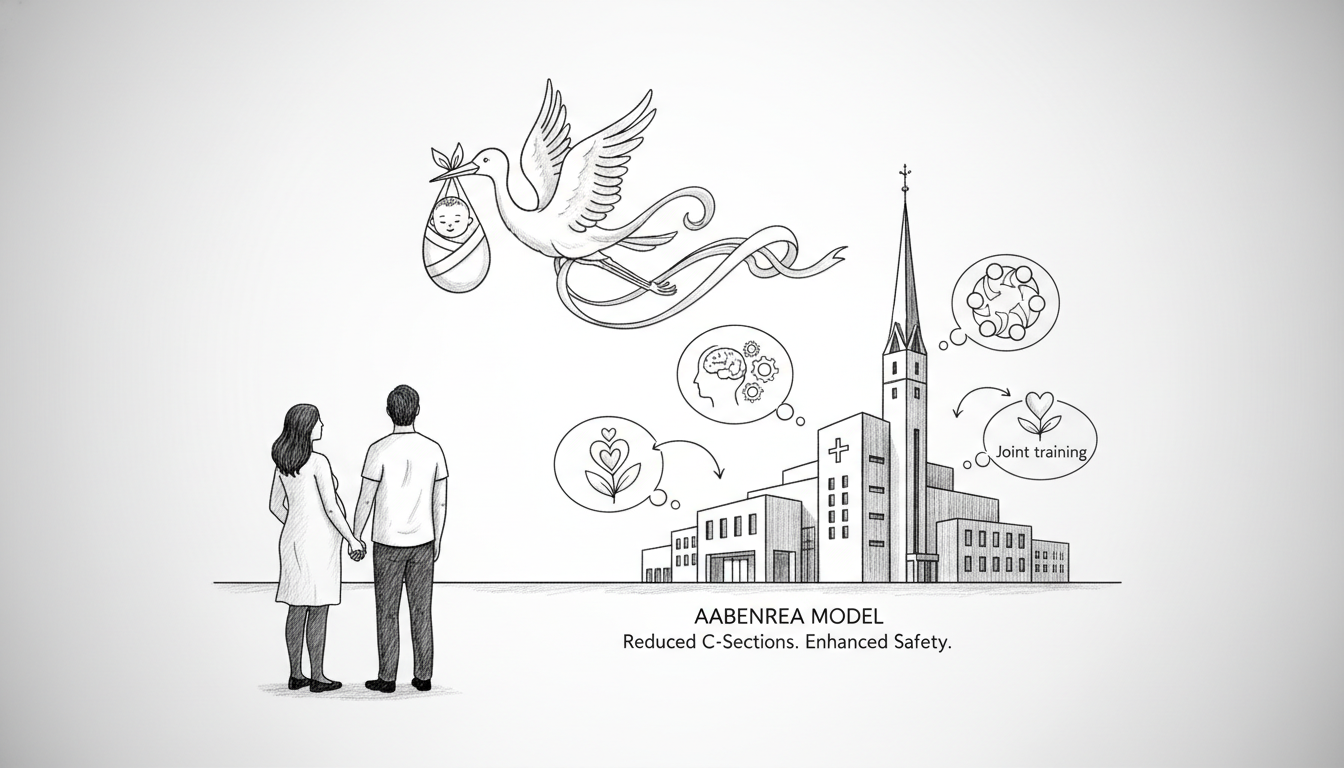A Danish hospital has achieved what researchers call remarkable results in reducing unnecessary cesarean sections while maintaining safety for both mothers and babies. Hospital Sønderjylland in Southern Denmark has documented a significant drop in surgical births through its unique approach to childbirth care.
New research led by midwife and researcher Eva Rydahl confirms the effectiveness of the so-called 'Aabenraa model.' The study followed the hospital's outcomes over nine years and compared them with similar facilities in Holbæk and Hjørring.
The cesarean section rate at Hospital Sønderjylland dropped from 21.1 percent to 12.1 percent between 2008 and 2017. The rate currently stands at 14.5 percent, making it the second-lowest in Denmark. Control hospitals showed only minimal reductions during the same period.
Rydahl describes these results as extraordinary. She notes that maintaining such low levels over time is extremely rare in healthcare. The achievement represents scientific validation for a project initially met with skepticism from some medical professionals.
The World Health Organization considers 10-15 percent cesarean sections optimal for healthy populations. Many European countries exceed this range, with the European average reaching 25 percent. Some regions in Central and South America report rates as high as 40 percent.
Luise Erichsen experienced the hospital's approach firsthand when she delivered her first child in 2020. Her baby was in breech position, a situation that leads to cesarean delivery in 85 percent of cases according to national health data. Despite this, she achieved vaginal birth through careful planning and support from hospital staff.
Erichsen recalls feeling empowered throughout the process. The staff took time to plan everything with her and provided continuous hand-holding support. Her daughter Ane was born without complications at 10:00 AM on September 25.
The Aabenraa model focuses on several key elements. Daily reflection meetings bring staff together to discuss cases. Joint training sessions for midwives and doctors build shared understanding. Systematic data use informs decisions, while psychological safety and learning culture replace zero-tolerance approaches to mistakes.
Chief midwife Trine Andersen expresses pride in the research validation. She emphasizes that success comes from continuous learning and willingness to examine what could be done differently. The department consciously avoids blame culture in favor of open discussion about uncertainties and potential improvements.
Lis Munk, chairwoman of the Danish Midwives Association, calls the results impressive evidence that cultural changes can make a difference. She stresses that the goal isn't pressuring women toward vaginal birth but ensuring the best possible birth experience through conversation and support.
Munk notes that when women fear childbirth, staff should explore the reasons behind those fears. Sometimes hidden experiences or traumas underlie the anxiety, and these won't disappear through surgical delivery. Listening seriously to women's concerns remains crucial.
The success at Hospital Sønderjylland demonstrates that changing cesarean rates requires more than individual effort. All professional groups must move in the same direction—midwives, doctors, and healthcare assistants together. This represents a cultural shift rather than overnight change.
Andersen firmly denies that women face pressure to avoid cesarean sections at the hospital. When a pregnant woman requests surgical delivery without clear medical indication, staff engage in thorough conversations about her reasons and alternatives.
Only Aalborg University Hospital in Thisted reports slightly lower cesarean rates at 14.2 percent. The chief midwife there attributes part of their success to transferring high-risk pregnancies to larger facilities, which naturally improves their statistics.
Rydahl considers Hospital Sønderjylland one of the few places in Europe where such substantial reduction in surgical births has been documented without negative consequences. She describes it as a unique example of how culture, professionalism, and collaboration can transform medical practice.
Erichsen has since had a second daughter at the same hospital, this time with the baby in head-first position. She acknowledges that other mothers might struggle with breech births, citing her own mother-in-law's experience. In her case, the hospital had the time and resources to support vaginal delivery successfully.
The Danish hospital's approach offers valuable lessons for maternity care worldwide. It demonstrates that reducing unnecessary medical interventions requires systematic cultural change rather than simply telling staff to perform fewer procedures. The combination of data-driven practice, psychological safety, and interprofessional collaboration creates conditions where both safety and natural birth can thrive together.

